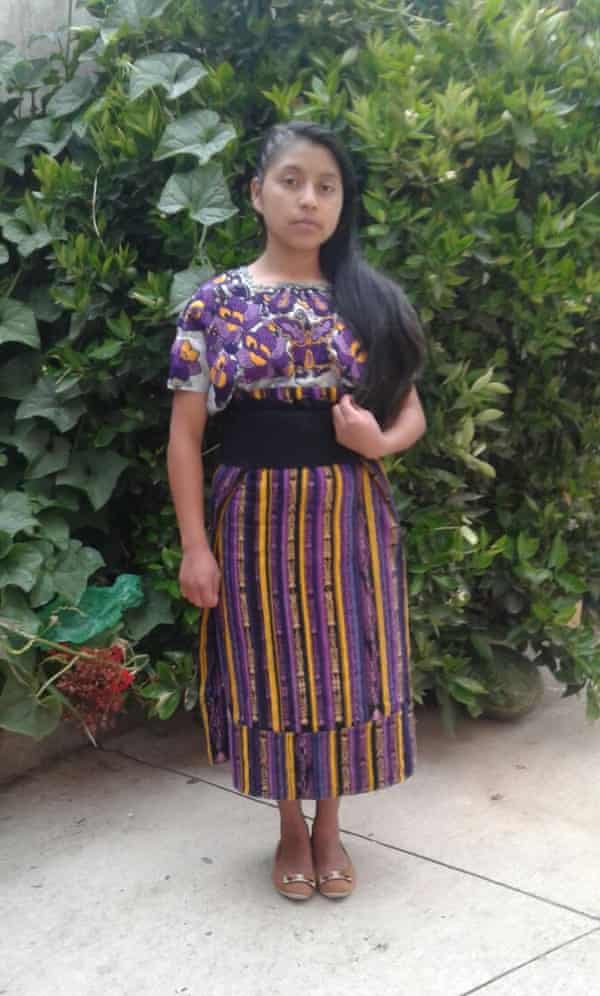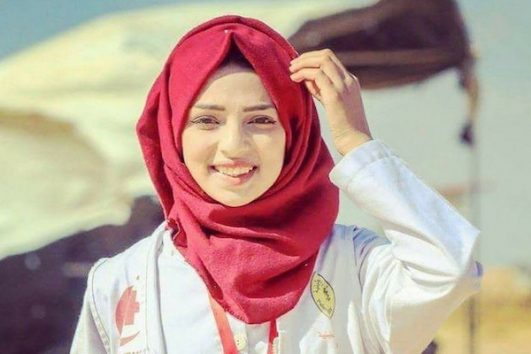
Claudia Patricia Gómez González
“Let us enter into the nightmare, into nightmares …. It only takes two facing mirrors to construct a labyrinth” Jorge Luis Borges
Razan al-Najjar was buried on Saturday, June 2, in Gaza. On the same day, June 2, Claudia Patricia Gómez González was buried in Guatemala. According to some reports, both Razan al-Najjar and Claudia Patricia Gómez González were 20 years old. Israeli soldiers shot Razan al-Najjar in the chest and killed her. A US Customs and Border Patrol shot Claudia Patricia Gómez González in the head and killed her. From militarized border to militarized border, slaughter of the innocents is the order of the day. The torture and murder of young unarmed women trying to make the world a better place is our contemporary fearful symmetry.
Claudia Patricia Gómez González was Mayan Mam, enjoyed life, studied hard. She grew up in San Juan Ostuncalco, a largely poor indigenous community outside Quetzaltenango, Guatemala, where she was raised mostly by women relatives. By all accounts, Claudia Patricia Gómez González was both happy and ambitious. She studied accounting, obtaining a certificate in 2016. She couldn’t get a job. She applied to Guatemala’s only public university and was rejected. Her only local option, educationally, was to attend a private university, which was beyond her family’s financial means. And so Claudia Patricia Gómez González headed north, crossed the Mexico – US border, and then was shot and killed. The US Customs and Border Patrol first tried to lie, claiming that Claudia Patricia Gómez González was armed, that she assaulted an officer. Fortunately, a nearby resident caught much of the events on her cellphone, and so, without explanation, the agency changed its story. Now it claims it will investigate. Claudia Patricia Gómez González’s family know better. Her aunt, Dominga Vicente, explained, “This is not the first person dying in the United States. There are many people that have been treated like animals and that isn’t what we should do as people. Don’t treat us like animals.” Another aunt, who wants to remain anonymous, added, “She wanted to live her dreams, make something of her life. I was waiting for her to call, but the call I got was to tell me she was dead. This is a nightmare. I am so sad.” Claudia Patricia Gómez González’s mother, Lidia González, wonders, “Claudia was a good girl and a good student. My daughter didn’t do anything wrong, it’s not fair that immigration killed her – why did they do that?” Why did they do that?
Razan al-Najjar was locally well known when she was killed. Razan al-Najjar worked as a volunteer emergency medical worker at the border separating Gaza and Israel. She always wore a white paramedic’s uniform when she served as a medical worker. She was well known at the demonstrations, rushing in to help anyone injured. She did this to help people, to make the world a better place, and to promote the advancement of women, everywhere but in particular in Gaza. Razan al-Najjar said, “Being a medic is not only a job for a man. It’s for women, too.” According to one eyewitness, Razan al-Najjar rushed to help an elderly man who had been hit in the head by a tear-gas canister. According to others, Razan al-Najjar and other paramedics were walking, arms raised, towards the fence in order to evacuate injured protesters. In either case, Razan al-Najjar was shot in the chest by an Israeli soldier … indisputably. A month before she was murdered, Razan al-Najjar explained, “We have one goal, to save lives and evacuate people. And to send a message to the world: Without weapons, we can do anything.” Razan al-Najjar’s mother, Sabreen al-Majjar, mourns: “I want the world to hear my voice … what’s my daughter’s fault? She will leave a large emptiness at home.”
There is a large emptiness left in so many homes today, around the world.
Some think that when two mirrors are placed opposite each other, they create infinity, a reflection that passes back and forth endlessly. The Argentine writer Jorge Luis Borges knew better. He knew that two mirrors create a labyrinth, and that that labyrinth is not only the stuff of nightmares, it is nightmare itself, at the center of which is a monster, part human part beast. In the depths of Argentina’s dirty wars, Borges understood that the cruelty and violence at the heart of the labyrinth was not necessarily that of the human nor that of the beast. We are the nightmare, we are the monster at the heart of the labyrinth, we are the labyrinth itself, and Claudia Patricia Gómez González and Razan al-Najjar are the reflecting mirrors that did not create the labyrinth but were instead shattered by it. Rest in peace Claudia Patricia Gómez González. Rest in peace Razan al-Najjar. There is a large emptiness left today; why did we do that?

Razan al-Najjar
(Photo Credit 1: The Guardian) (Photo Credit 2: 972 Magazine)